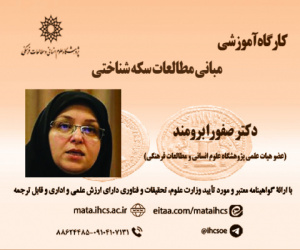طراحی الگوی مفهومی دانشگاه نوآور در ارتباط با جامعه: راهبردی برای مدیریت و توسعه ی دانشگاه های نسل چهارم (مقاله علمی وزارت علوم)
درجه علمی: نشریه علمی (وزارت علوم)
آرشیو
چکیده
مقدمه و هدف: با توجه به روند شکل گیری نسل چهارم از دانشگاه ها و تأکید بر پاسخ گویی به نیازهای جامعه ی مدنی و عدم مشخص بودن ویژگی های چنین دانشگاهی به صورت جامع، هدف از پژوهش حاضر، طراحی الگوی مفهومی دانشگاهی نوآور در ارتباط با جامعه مبتنی بر مارپیچ چهارگانه(QH) می باشد. روش شناسی پژوهش: پژوهش از نظر هدف کاربردی است. ابتدا مبتنی بر روش مرور نظام مندِ 37 مقا له علمی–پژوهشی داخلی و خارجی مرتبط با موضوع در سال های1990 تا 2020 و نیز اسناد بالادستی نظام آموزش عالی ایران به روش تحلیل محتوا، ویژگی های دانشگاه نوآور در ارتباط با جامعه احصاء و سپس مبتنی بر روش تحقیق توصیفی-پیمایشی، با استفاده از ابزار پرسشنامه محقق ساخته، اعتباریابی سازه ها و برازش مدل از طریق تحلیل عاملی تاییدی و مدل سازی معادلات ساختاری به روش حداقل مربعات جزئی(PLS) مورد بررسی قرار گرفت. با توجه به جامعیت الگوی مفهومی و نیاز به ارزیابی تمامی ابعاد آن(نهادها، فرایند، ستانده ها و تأثیرات) و تاکید بر ارتباط با جامعه ی مدنی، دانش آموختگان و اعضای هیأت علمی فعال در شرکت های مستقر در پارک های علم و فناوری دانشگاهی فعال در دوران همه گیری کرونا به عنوان جامعه ی آماری پژوهش انتخاب شدند و پرسشنامه میان 250 نفر در دو پارک علم و فناوری دانشگاه تهران و جهاد دانشگاهی کرمانشاه با استفاده از روش نمونه گیری خوشه ای به عنوان نمونه توزیع گردید. یافته ها: الگوی نهایی با پدیده ی هسته ای نام گذاری شده توسط مؤلفان، با عنوان "دانشگاه نوآور اجتماعی" و با اتخاذ رویکرد سیستمی به دانشگاه به عنوان دانشگاهی باز در 4 مقوله ی خوشه ای شامل نهاده ها، فرایند تعاملات، ستانده ها و تأثیرات با 11 مقوله ی اصلی و 32 مؤلفه به روش کدگذاری طراحی گردید. بارعاملی بالای تمامی گویه ها ( مقادیر بالای 5/0) نشان از سطح معناداری قوی و همستگی زیاد میان متغیرهای قابل مشاهده با متغیرهای پنهان دارد. همچنین برازش مدل در هر چهار خوشه ی مقوله ای با محاسبه ی معیار GOF، در سطح قوی(755/0) تائید شد. بحث و نتیجه گیری: ویژگی برجسته دانشگاه نسل چهارم، جامعه محوری و تاکید بر پاسخگویی و مسئولیت پذیری در برابر جامعه مدنی در سطح محلی، ملی، جهانی می باشد و مسئولان و مدیران دانشگاهی باید این مهم را در تمامی ابعاد سیستمی دانشگاه اعم از نهاده ها، فرایند تعاملات، ستانده ها و تأثیرات دانشگاه مد نظر قرار دهند.Designing a Model of an Innovative University in Relation to Society: a Strategy for the Management and Development of Fourth-Generation Universities
Introduction and Objective: Considering the process of transforming the university from the third generation to the fourth generation with the aim of responding to the needs of civil society and the lack of clarity about the characteristics of such a university comprehensively, the main purpose of the research is to design the characteristics of the fourth generation university as an innovative one in connection with a society based on the quadruple helix (QH). Research Methodology: Research is practical in terms of purpose. First, on the basis of the systematic review methodology, 37 national and international scientific-research articles related to the topic from 1990 to 2020, as well as the national documents from the Iranian higher education system were analyzed utilizing the content analysis within the coding process, and the features of the innovative university in relation to society have been identified. Then, based on the descriptive-survey research method and the questionnaire developed by the researchers, the validity of the constructs and the fit of the model have examined through the partial least squares (PLS) technique.Given the comprehensiveness of the conceptual model and the need to evaluate all its dimensions and focus on the relationship with civil society, graduates and faculty from affiliated university science and technology parks that were active during COVID-19 (2020) were chosen as the statistical population. Then the questionnaire were distributed to 250 individuals in two science and technology parks using the cluster sampling method. Results: The final model with the core phenomenon named by the authors as a"socially innovative university" on the basis of a systems approach to the university as an open university was designed in 4 cluster categories including inputs, process of interaction, outputs, and effects with 11 main categories and 32 components. High factor loads of all elements (values greater than 0.5) indicate a high level of significance and a strong correlation between visible variables and hidden variables. In addition, by calculating the GOF criterion, the fit of the model was confirmed at a high level (0.755) in all four categorical groups.







